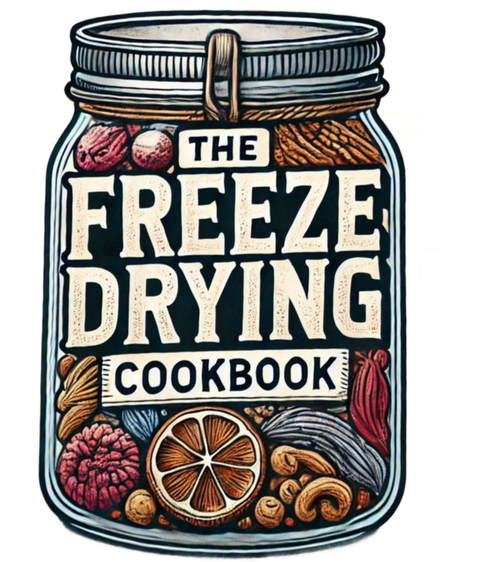The tips below are based on tried-and-true methods, especially useful for tricky or stubborn foods. There’s no one-size-fits-all solution, so some experimentation may be required — and that’s part of the fun!
⚖️ How to Calculate Rehydration Amounts
The easiest way to determine how much liquid to add back to your food is by using a before-and-after weight method:
- Weigh your tray (in grams) before freeze drying.
- Weigh it again after freeze drying.
- Subtract the after weight from the before weight — this gives you the amount of water removed.
- Divide that number by the number of servings to get the estimated amount of water needed per serving.
Example:
- Tray weight before: 1275g
- Tray weight after: 510g
- Water lost: 765g
- 10 servings = ~76.5g of water per serving
Using tray dividers makes this process super easy!
🧪 Tools & Techniques for Rehydrating
🔲 Vacuum Chamber Sealer (My Favorite!)
This is a game-changer for infusing flavor while rehydrating:
- Place your food in a container that fits inside the vacuum chamber.
- Add the liquid of your choice (water, broth, marinade, beer, etc.).
- Vacuum-seal the container — this opens the pores of the food.
- When the vacuum is released, the food absorbs the liquid like a sponge.
Works with both freeze-dried and fresh foods!
🍲 Crock Pot / Instant Pot / Pressure Cooker
Great for gently rehydrating and reheating foods:
- Use the included basket or rack to keep food above the water.
- The steam slowly reintroduces moisture while preserving texture.
🌫️ Steamer
Just like the pressure cooker method:
- Keeps food elevated above the water.
- Steam gradually softens and rehydrates.
🧺 Bamboo Basket (Wicker Steamer)
- Place over a boiling pot of water.
- Gentle steam rises to rehydrate the food.
- Be careful not to burn the bottom — check occasionally.
🔥 Boiling Water
The most common and convenient method:
- Add boiling water slowly while stirring.
- Works great with a food scale and tray dividers for portioning.
- Use our recipes for reliable, repeatable results.
🧻 Ziploc & Damp Paper Towel
Perfect for baked goods like:
- Breads
- Muffins
- Crackers
Place the item in a sealed Ziploc bag with a damp paper towel. Leave in the refrigerator overnight. This rehydrates slowly without making the food soggy. Flip the item halfway through if needed.
💦 Spray Bottle
- Ideal for tricky foods that just need a little surface moisture.
- Helps prevent over-saturation.
- Also useful for misting a liquid layer before adding toppings (before freeze drying).
🧊 Refrigerator Rehydration
- Works well for slow and safe rehydration.
- Combine with the paper towel & Ziploc method.
- Great for items that might spoil if left at room temperature too long.
🔥 Sous Vide Method
An underutilized but fantastic option:
- Add water or any liquid directly into the vacuum-sealed bag.
- Cook low and slow in a water bath.
- Perfect for meats, veggies, and full meals.
- Adds incredible flavor — try steak in marinade or broccoli in broth!
🌟 Final Thoughts
Rehydrating freeze-dried food isn’t just about adding water — it’s about restoring taste, texture, and even elevating flavor. Keep experimenting, take notes, and don’t forget to check out the Freeze Drying Community on Facebook and YouTube for tips from other food preservers just like you!


Comments (1)
Under the “Best Rehydration Practices” section the downloadable link is the food log PDF. I feel this may have been was unintentional. Just an FYI
———
Freeze Drying Cookbook replied:
Thank you! We have fixed the problem :)